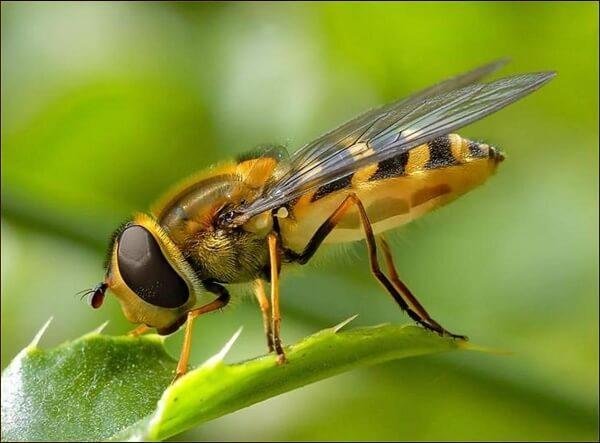Do insects sleep?
Rest is also important for the lives of insects, who can sleep soundly and respond to stimulants such as caffeine.

Measuring sleep in insects is not an easy task. In many species there are periods of apparent inactivity, but do they sleep like us? A study carried out by the University of Pennsylvania and the Institute of Neurosciences of California has revealed that fruit flies do so deeply that, when they are at rest, it is hard to wake them up. Also, if they do not get enough rest, they show clear symptoms of lack of sleep, and they react in the same way as people to caffeine or sleeping pills.
In fact, there is an insect that has a high tolerance to caffeine: it is the coffee berry borer, Hypothenemus hampei, a tiny beetle that lives in the berries of the plant, where pure caffeine is found at lethal concentrations for most insects and many other animals. If he were a human, his coffee consumption would be equivalent to drinking more than 200 expresses a day. The secret of this insect is that it has up to 14 types of bacteria in its gut, which helps it tolerate such high doses of caffeine. One of them is Pseudomonas fulva. This bacterium has a gene responsible for so easily degrading caffeine and surviving only with it.
As happens to humans, effective communication between the members of a society is fundamental to maintaining life in community. That is why nighttime rest is also important for a type of insect: bees.
They, on the other hand, are not able to communicate effectively with their peers if they have not been able to take a nap. When the flowers are closed, at night, they sleep with their jaws closed around a stem or twig, which prevents them from falling to the ground. The communication between bees is done in a very sustainable way. Through a kind of dance, or stimuli like the smell of pheromones, they inform the individuals in their society where to find food.
Therefore, a "poorly rested" bee could be a disaster for the collective life and prosperity of the hive. Life in the hive is very demanding for bees; the drones, for example, are expelled or left to die of hunger when they are no longer necessary (at the end of the reproductive period of the virgin queens). On the other hand, worker bees choose larvae less than three days old when they begin to observe that a queen bee is being inefficient.
However, there are thousands of types of bees. Some of them live in community, but others live alone. Those that live in socidad, form colonies of between 15,000 and 80,000 individuals.
Insects are the type of living being that abounds most on Earth. In fact, the entire surface of the Earth is covered by insects, except Antarctica, and it is estimated that there are about 10 billion insects per square kilometer on the Earth's surface. However, despite its abundance, there are still many data on insects that we do not know.



To the question in your title, my Magic 8-Ball says:
Hi! I'm a bot, and this answer was posted automatically. Check this post out for more information.